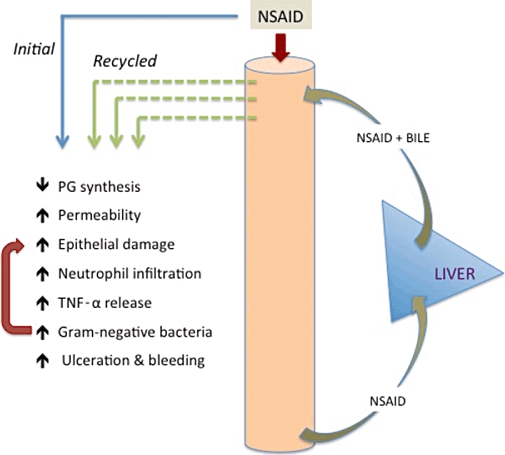Figure 1.

Pathogenesis of NSAID enteropathy. NSAIDs that undergo enterohepatic recirculation exhibit much greater capacity to induce small intestinal injury than those that are not absorbed and delivered into the upper small intestine in bile. Inhibition of PG synthesis and increased intestinal permeability can be observed with all NSAIDs, but only those that undergo enterohepatic recirculation will cause significant ulceration. It is likely that NSAIDs, particularly when combined with bile, can directly damage epithelial cells in the intestine. Neutrophil infiltration and release of TNF-α contribute to injury, but the increase in gram-negative bacteria in the small intestine is particularly important for the generation of ulcers. Thus, broad-spectrum antibiotics can prevent experimental NSAID enteropathy, and germ-free rodents do not develop intestinal ulcers when given NSAIDs.
